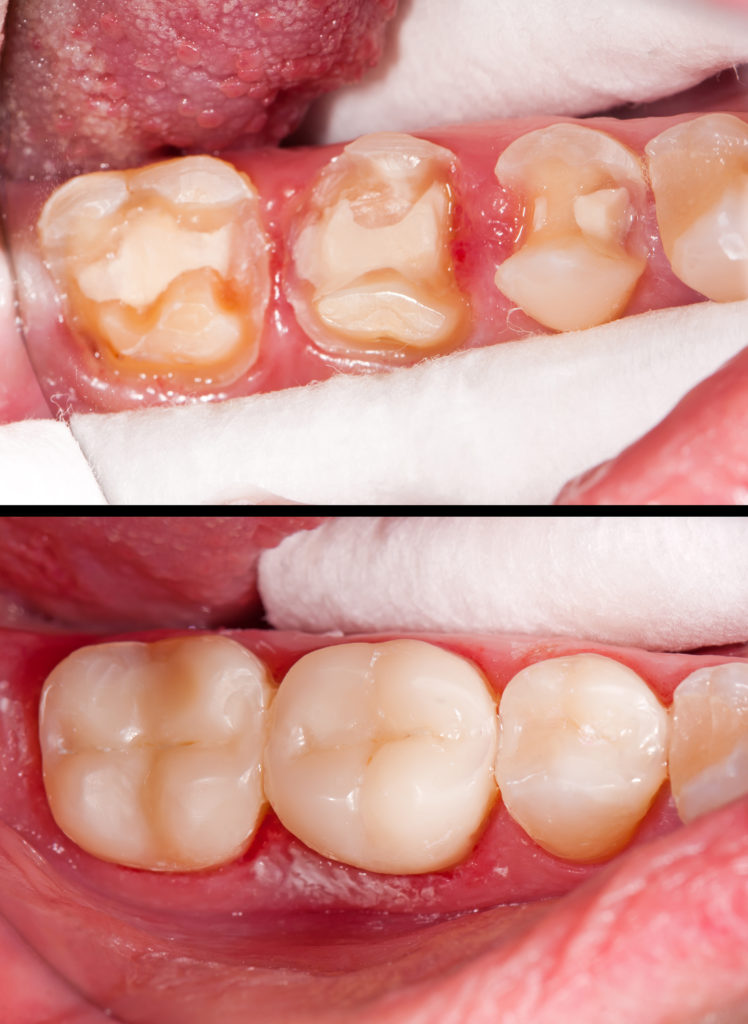Porcelain and Composite Fillings NYC
Cavities are an extremely common dental issue. At 172 NYC Dental, we are composite and porcelain fillings specialists. We effectively identify and treat areas of tooth decay to ensure your mouth stays as healthy as possible. For smaller cavities, we can use porcelain and composite fillings to replace any tooth material removed while treating the decay. This treatment is also called cosmetic dentistry. The Ceramic onlays and resins are all bonded into place with the aid of a light wand. These white ( we match your tooth shade to personalize each restoration) are all great solutions for addressing and “hiding” areas of decay. These restorations are beautiful and long-lasting. They are noninvasive, inexpensive, and many times completed in one dental visit.
Insurance Options
Why NYC Patients Need Porcelain and Composite Fillings
Dental decay is the most common dental problem we encounter among our patients. Tooth decay is a lesion that pierces through the extremely hard outer layer, enamel, and then quickly spreads through the soft organic part of the tooth known as dentin. If the decay reaches and invades the pulp chamber (nerve, artery, and vein) of the tooth, Root canal therapy is required to solve that infectious process. So diagnosing and treating tooth decay in its earliest manifestations is an important and necessary step in preventing more intrusive and expensive dental work from occurring. As dentists who emphasize preventative dentistry, it is important to know the etiology of dental decay. Dental decay occurs when bacteria, that always exist in the mouth, such as Step. Mutants come into contact with simple sugar known as sucrose. The bacteria secrete enzymes that work on the sugar to form an acid and thus the decay process starts. 172 NYC Dental emphasizes proper brushing for two minutes with a small head, soft brush, twice a day. We recommend the least abrasive fluoride toothpaste such as Sensodyne, Crest, and Colgate. We strongly urge our patients to floss once a day, every day preferably before bedtime. We ask that our patients greatly reduce their sugar intake by not drinking soda, sugary liquids. Not eating dried fruit, honey, or adding sugar to their tea or coffee. Once a cavity forms the only way to treat a cavity and prevent it from spreading is by removing it from your tooth using specialized dental instruments, such as drills. Once your dentist cleans out the tooth decay, your tooth must be restored using the proper material. That is where the porcelain and composite fillings come in.
What Are Porcelain and Composite Fillings?
There are a variety of dental fillings to choose from. However, they all serve the same purpose — restoring teeth that were compromised by decay. Dental fillings are ideal for patients who have sufficient tooth structure left after treatment and have not had a root canal procedure.
Dental bonding, also called composite fillings, can be an excellent option for smaller areas of dental decay that are still surrounded by healthy tooth structure. Composite fillings use a special resin material that matches the shade of your teeth so that the restoration looks natural.
Porcelain or ceramic onlays are often better choices if the decay has extended to several surfaces of the tooth. We custom-make these dental restorations in our lab out of porcelain or zirconia. Dental onlays cover most of the tooth’s surface to protect it from further damage and decay. Dental onlays are more conservative than full crowns. The onlays preserve more of the original tooth structure, while a crown covers the entire tooth.
Dental Composite Bonding Procedure
Dental composite bonding can usually be achieved in just one visit. After we completely remove the tooth decay and clean the area, we apply an etching solution to the tooth’s surface. This makes it rough so that the bonding material effectively adheres.
After we prep the tooth’s surface, we apply a desensitizer (gluma), then a flowable composite resin layer followed by a layer of the tooth match resin to ensure a strong bond and a long-lasting restoration. The resin material is carefully shaped to resemble your natural tooth. A curing light further strengthens the composite resin. We then gently buff the resin to seamlessly blend with your other teeth.
 Dental Onlay and Inlay Procedures
Dental Onlay and Inlay Procedures









